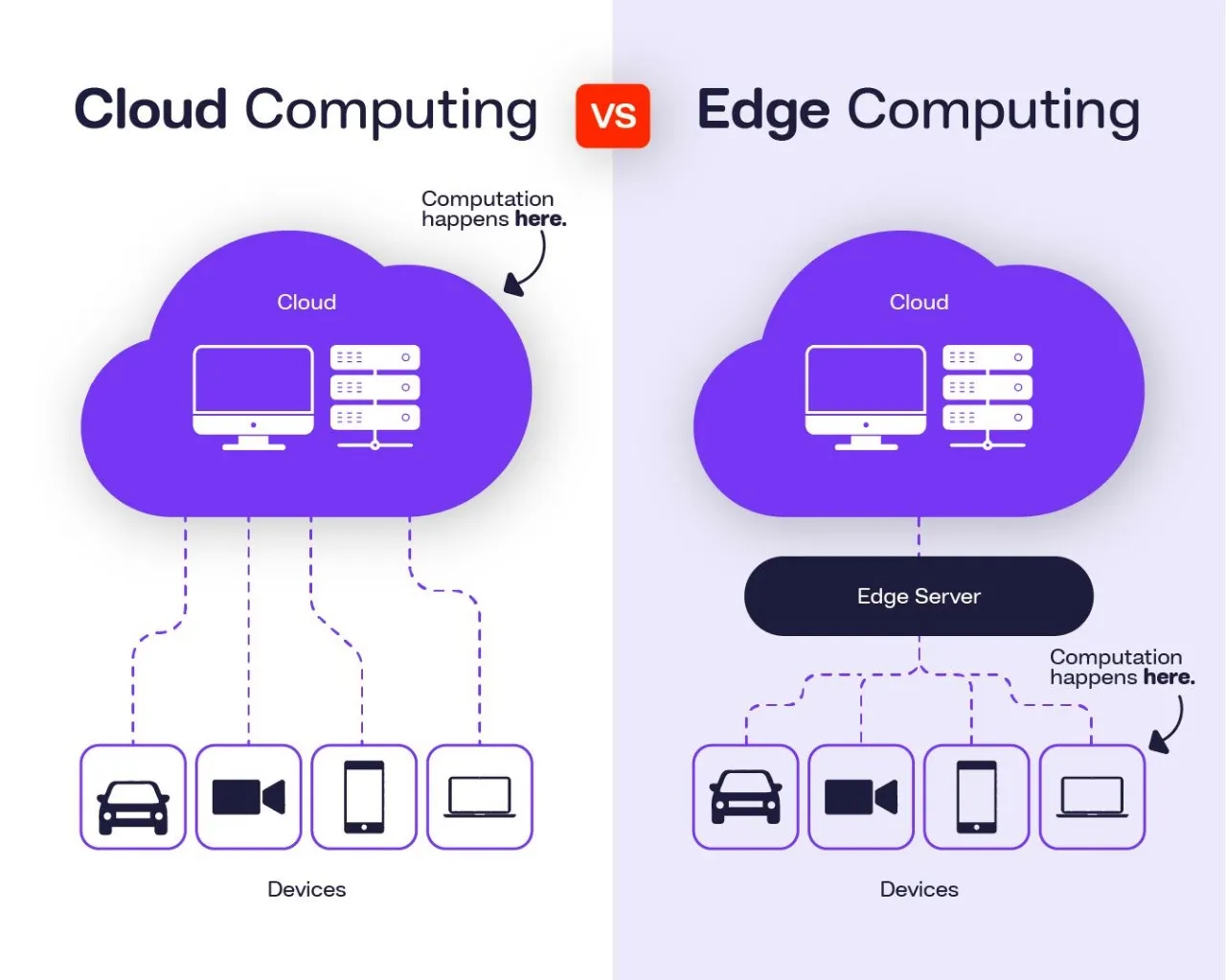Edge Computing vs. Cloud Computing: What’s Best for Your Business?

Understanding Edge Computing
Edge computing processes data closer to its source rather than relying on a centralized cloud server. This approach minimizes latency, enhances real-time processing, and reduces bandwidth usage.
Benefits of Edge Computing
-
Lower Latency: Data is processed locally, enabling real-time decision-making.
-
Reduced Bandwidth Costs: Less data is transmitted to the cloud, lowering expenses.
-
Enhanced Security & Privacy: Data stays within local networks, reducing exposure to cyber threats.
-
Better Reliability: Works even with limited or unstable internet connections.
Use Cases for Edge Computing
-
Manufacturing: Automated monitoring of equipment performance.
-
Healthcare: Real-time patient monitoring and diagnostics.
-
Retail: Personalized customer experiences and inventory management.
-
Autonomous Vehicles: Instant data processing for navigation and safety.
Understanding Cloud Computing
Cloud computing relies on remote data centers to store, process, and manage information over the internet. Businesses can access computing resources on demand without investing in physical infrastructure.
Benefits of Cloud Computing
-
Scalability: Easily scale computing resources based on business needs.
-
Cost-Effectiveness: Pay-as-you-go pricing model reduces capital expenses.
-
Remote Accessibility: Access data and applications from anywhere.
-
Automatic Updates: Cloud providers handle software and security updates.
Use Cases for Cloud Computing
-
E-commerce: Hosting online stores and managing customer data.
-
SaaS Applications: Delivering software solutions like CRM and ERP systems.
-
Big Data Analytics: Processing large datasets efficiently.
-
Media & Entertainment: Streaming services and content delivery.
Edge vs. Cloud Computing: Key Differences
| Feature | Edge Computing | Cloud Computing |
|---|---|---|
| Data Processing | Locally at the source | Centralized in data centers |
| Latency | Ultra-low | Higher, due to remote processing |
| Cost | Lower bandwidth costs | Pay-as-you-go pricing |
| Scalability | Limited to physical location | Virtually unlimited |
| Security | Better local control | Vulnerable to cyber threats |
| Internet Dependency | Works offline | Requires stable connection |
Which One is Best for Your Business?
The choice between Edge and Cloud Computing depends on your business model and requirements:
-
Choose Edge Computing if you need low latency, real-time processing, and enhanced security (e.g., IoT applications, manufacturing, and healthcare).
-
Choose Cloud Computing if you require scalability, cost-efficiency, and remote accessibility (e.g., SaaS businesses, big data, and content streaming).
Hybrid Approach: Best of Both Worlds
Many businesses are adopting a hybrid computing model, combining edge and cloud to optimize performance and efficiency. For example, real-time processing happens on the edge, while cloud storage ensures scalability and remote accessibility.
Final Thoughts
Both Edge and Cloud Computing have their strengths and limitations. Understanding your business requirements will help you make an informed decision. To learn more about advanced computing solutions, visit Brobotx Blog.